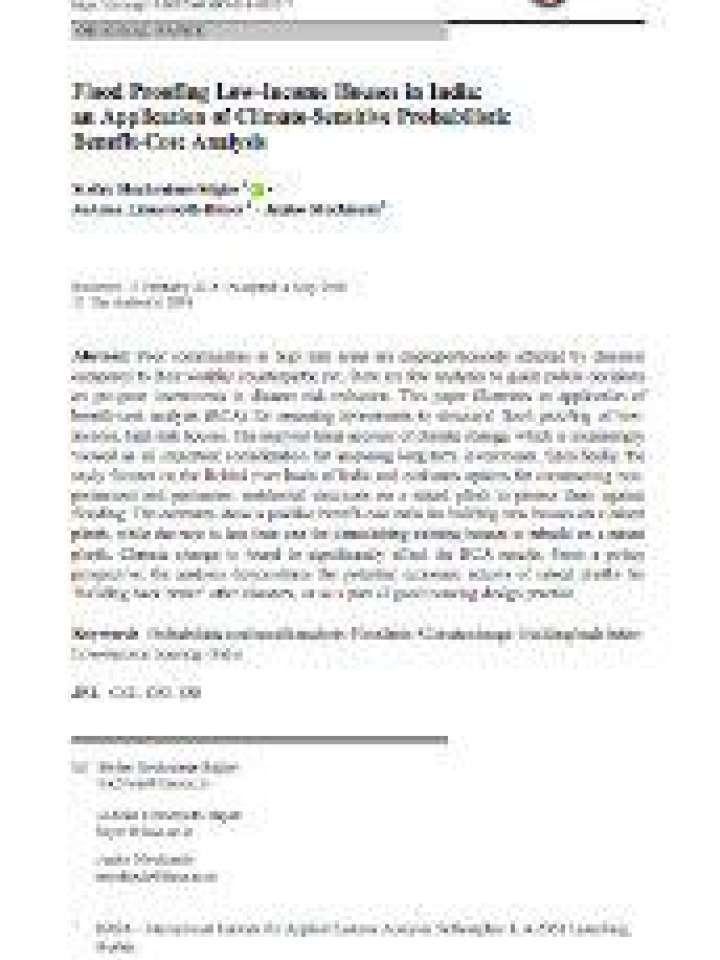Flood proofing low-income houses in India: an application of climate-sensitive probabilistic benefit-cost analysis
Poor communities in high risk areas are disproportionately affected by disasters compared to their wealthy counterparts; yet, there are few analyses to guide public decisions on pro-poor investments in disaster risk reduction. This paper illustrates an application of benefit-cost analysis (BCA) for assessing investments in structural flood proofing of low-income, high-risk houses. The analysis takes account of climate change, which is increasingly viewed as an important consideration for assessing long-term investments.
Specifically, the study focuses on the Rohini river basin of India and evaluates options for constructing non-permanent and permanent residential structures on a raised plinth to protect them against flooding. The estimates show a positive benefit-cost ratio for building new houses on a raised plinth, while the ratio is less than one for demolishing existing houses to rebuild on a raised plinth. Climate change is found to significantly affect the BCA results. From a policy perspective, the analysis demonstrates the potential economic returns of raised plinths for ‘building back better’ after disasters, or as a part of good housing design practice.
Explore further
